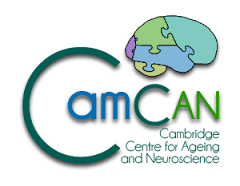CBSU bibliography search
To request a reprint of a CBSU publication, please
click here to send us an email (reprints may not be available for all publications)
Taking sides: Left and right-temporal activations during retrieval of long-term memories.
Authors:
GRAHAM, K.S., LEE, A.C.H., Lee, M., OWEN, A. & PATTERSON, K.
Reference:
Society for Neuroscience Annual Meeting, 639, 10
Year of publication:
2001
CBU number:
5142
Abstract:
Using positron emission tomography (PET) we examined the patterns of cerebral blood flow related to the retrieval and production of long-term memories (in particular, autobiographical memory, perceptual and functional knowledge of objects and animals; and knowledge of people). In all experimental tasks, subjects were asked to produce information about words (e.g., party, dog, teacher, president) that they heard via headphones. An overall analysis in all 24 subjects, contrasting autobiographical and general semantic memory revealed significant bilateral activations in the medial frontal cortex (BA 9/10), middler/inferior temporal gyri (BA 20) and inferior parietal lobe (BA 30/40). More specific contrasts of the retrieval of personal (autobiographical memory and personally relevant people) versus public memories (public events and famous people) revealed significant activation of the anterior right temporal lobe. In all semantic conditions, there was strong involvement of the left hemisphere. Posterior temporal lobe regions (BA 37) were more involved in the retrieval of perceptual information about objects and animals, while there was increased blood flow in anterior regions (e.g., the middle temporal gyrus and temporal pole) for the retrieval of functional information about objects and animals, or factual knowledge about people. Prefrontal activations also seemed to respect the distinction within the temporal lobes, with strong medial frontal activity associated with more anterior temporal lobe activations and increases in cerebral blood flow in ventrolateral regions in conjunction with posterior temporal lobe activations. These studies reveal that the right temporal lobe is more involved in the retrieval of personally-relevant information, while there is a posterior ëperceptualí versus a more anterior ëpropositionalí system in the left temporal lobe.

 MRC Cognition and Brain Sciences Unit
MRC Cognition and Brain Sciences Unit

